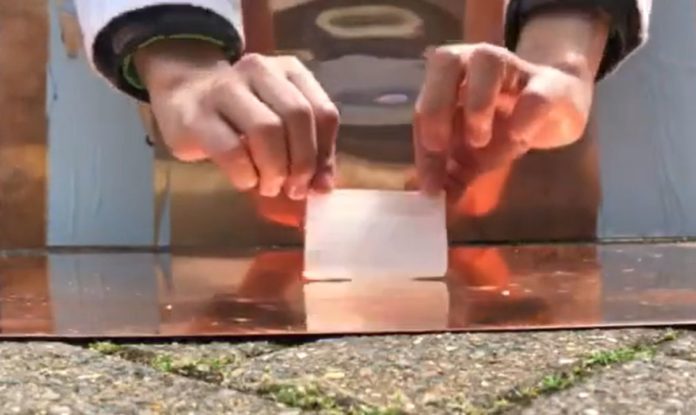With 80% water content, you’d expect it to pop like a water balloon, but it holds together and withstands massive compressive stresses.
Despite its high water content, the soft-yet-strong material developed by a team at the University of Cambridge looks and feels like a squishy jelly, but when compressed, it performs like an ultra-hard, shatterproof glass.
Researchers have discovered a jelly-like material that can endure the equivalent of an elephant standing on it and heal faster to its previous shape, despite the fact that it is composed of 80 percent water.
The soft-yet-strong substance, invented by researchers at the University of Cambridge, has the appearance and feel of a squishy jelly, but when squeezed, behaves like an ultra-hard, shatterproof glass, despite its high water content.
The fraction of the material that is not water is composed of a network of polymers kept together by reversible on/off interactions that govern the material’s mechanical properties. This is the first time such a high level of compression resistance has been put into a soft material.
The ‘super jelly’ has a broad range of possible applications, including soft robotics, bioelectronics, and even as a biological cartilage replacement.
Material behavior – whether soft or stiff, brittle or strong – is determined by their molecular structure. Although stretchy, rubber-like hydrogels possess a number of intriguing qualities that make them a popular subject of research – such as toughness and self-healing capacities — developing hydrogels that can endure compression without crushing is a difficult task.
“In order to make materials with the mechanical properties we want, we use crosslinkers, where two molecules are joined through a chemical bond,” says Dr Zehuan Huang from the Yusuf Hamied Department of Chemistry, the study’s first author.
“We use reversible crosslinkers to make soft and stretchy hydrogels, but making a hard and compressible hydrogel is difficult and designing a material with these properties is completely counterintuitive.”
The team used barrel-shaped molecules called cucurbiturils to create a hydrogel that can endure compression while working in Professor Oren Scherman’s lab. The crosslinking molecule cucurbituril encases two guest molecules in its cavity, acting as a molecular handcuff. The researchers created guest molecules that prefer to remain inside the cavity for a longer period of time than usual, which helps keep the polymer network tightly connected and thus capable of enduring compression.
“At 80% water content, you’d think it would burst apart like a water balloon, but it doesn’t: it stays intact and withstands huge compressive forces,” says Scherman, Director of the University’s Melville Laboratory for Polymer Synthesis. “The properties of the hydrogel are seemingly at odds with each other.”
“The way the hydrogel can withstand compression was surprising, it wasn’t like anything we’ve seen in hydrogels,” adds co-author Dr Jade McCune, also from the Department of Chemistry. “We also found that the compressive strength could be easily controlled through simply changing the chemical structure of the guest molecule inside the handcuff.”
To create glass-like hydrogels, they picked specific guest molecules for the handcuff. Changing the chemical structure of guest molecules within the handcuff allowed the material’s dynamics to ‘slow down,’ with the final hydrogel’s mechanical properties ranging from rubber-like to glass-like states.
“People have spent years making rubber-like hydrogels, but that’s just half of the picture,” says Scherman. “We’ve revisited traditional polymer physics and created a new class of materials that span the whole range of material properties from rubber-like to glass-like, completing the full picture.”
The researchers used the material to create a hydrogel pressure sensor that can track human activities such as standing, walking, and leaping in real time.
“To the best of our knowledge, this is the first time that glass-like hydrogels have been made. We’re not just writing something new into the textbooks, which is really exciting, but we’re opening a new chapter in the area of high-performance soft materials,” says Huang.
The Scherman lab is presently collaborating with experts in engineering and materials science to advance the development of these glass-like materials for biomedical and bioelectronic applications. The Leverhulme Trust and a Marie Skodowska-Curie Fellowship supported part of the research.
Source: 10.1038/s41563-021-01124-x
You were reading: A new self-healing glass-like supramolecular polymer networks
